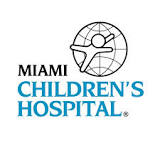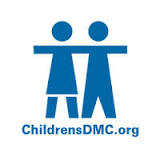A Randomized Control Trial of Hip Dislocation Techniques for Pediatric Patients With Cerebral Palsy
| Status: | Recruiting |
|---|---|
| Conditions: | Neurology, Neurology, Orthopedic |
| Therapuetic Areas: | Neurology, Orthopedics / Podiatry |
| Healthy: | No |
| Age Range: | 7 - 21 |
| Updated: | 10/26/2018 |
| Start Date: | October 2015 |
| End Date: | June 2020 |
| Contact: | Emily Dodwell, MD MPH FRCSC |
| Email: | dodwelle@hss.edu |
| Phone: | 212-606-1451 |
ORCHID: Osteotomy vs Resection in CP Hip for Irreducible Dislocations: A Randomized Controlled Trial Comparing McHale to Castle Techniques
This randomized controlled trial will compare proximal femoral resection-interposition
arthroplasty to proximal femoral resection with subtrochanteric valgus osteotomy for the
treatment of painful irreducible hip dislocation in patients with cerebral palsy. The primary
outcome is quality of life and care giver burden measured by The Caregiver Priorities and
Child Health Index of Life with Disabilities (CPCHILD) score at one year. Secondary outcomes
will include pain (NCCPC-R, PROMIS pain intensity and PROMIS pain interference), function
(mobility questions), complications and surgical parameters such as OR time and fluoroscopy
time. A cost-effectiveness analysis will follow completion of the randomized controlled trial
(RCT). The authors hypothesize that mean CPCHILD scores (measured at 1 year) will be
significantly higher following the Subtrochanteric Valgus Osteotomy technique compared to
Proximal Femoral Resection-Interposition Arthroplasty technique. Furthermore, the Proximal
Femoral Resection-Interposition Arthroplasty technique will have a shorter length of hospital
stay, shorter fluoroscopy and OR times and the Subtrochanteric Valgus Osteotomy will have
longer sitting tolerance, less pain, smaller burden for caregivers, better health, and higher
quality of life. Additionally the authors hypothesize that Subtrochanteric Valgus Osteotomy
will be more expensive than Proximal Femoral Resection-Interposition Arthroplasty, due to the
cost of the plate, longer operative time, longer length of stay, and blood loss, but
Subtrochanteric Valgus Osteotomy will be preferred by patients due to less pain and better
functional and quality of life outcomes.The results of this study are expected to improve
outcomes for children with cerebral palsy with painful irreducible dislocated hips.
arthroplasty to proximal femoral resection with subtrochanteric valgus osteotomy for the
treatment of painful irreducible hip dislocation in patients with cerebral palsy. The primary
outcome is quality of life and care giver burden measured by The Caregiver Priorities and
Child Health Index of Life with Disabilities (CPCHILD) score at one year. Secondary outcomes
will include pain (NCCPC-R, PROMIS pain intensity and PROMIS pain interference), function
(mobility questions), complications and surgical parameters such as OR time and fluoroscopy
time. A cost-effectiveness analysis will follow completion of the randomized controlled trial
(RCT). The authors hypothesize that mean CPCHILD scores (measured at 1 year) will be
significantly higher following the Subtrochanteric Valgus Osteotomy technique compared to
Proximal Femoral Resection-Interposition Arthroplasty technique. Furthermore, the Proximal
Femoral Resection-Interposition Arthroplasty technique will have a shorter length of hospital
stay, shorter fluoroscopy and OR times and the Subtrochanteric Valgus Osteotomy will have
longer sitting tolerance, less pain, smaller burden for caregivers, better health, and higher
quality of life. Additionally the authors hypothesize that Subtrochanteric Valgus Osteotomy
will be more expensive than Proximal Femoral Resection-Interposition Arthroplasty, due to the
cost of the plate, longer operative time, longer length of stay, and blood loss, but
Subtrochanteric Valgus Osteotomy will be preferred by patients due to less pain and better
functional and quality of life outcomes.The results of this study are expected to improve
outcomes for children with cerebral palsy with painful irreducible dislocated hips.
The treatment of children with cerebral palsy (CP) with painful dislocated hips is a clinical
challenge for the pediatric orthopedic surgeon. Although current regimens are based primarily
on hip surveillance and early treatment of subluxation to avoid progression to dislocation,
hip dislocations are still identified in the CP population. In younger children, in whom the
hip is still of relatively normal morphology with intact cartilage and potential for
remodeling (often identified by open tri-radiate cartilage) open hip reduction, varus
rotational osteotomy and pelvic osteotomy may be a reasonable option. In older children,
those with a deformed or damaged femoral head, those with closed triradiate cartilage, or in
those with an irreducible hip, salvage options must be considered.
Multiple techniques exist for treatment of irreducible painful hips in CP, including proximal
femoral resection-interposition arthroplasty, resection at the femoral neck with
subtrochanteric valgus osteotomy, hip replacement or hip arthrodesis (fusing the femur to the
socket in a static position). This wide variation in practices is consistent with clinical
uncertainty regarding the optimal treatment method for this problem. The most frequently
performed intervention for a painful irreducible hip in the setting of CP is a form of
resection arthroplasty, either alone (proximal femoral resection-interposition arthroplasty)
or in conjunction with valgus support osteotomy. Technique selection is based on the
functional level of the patient, patient symptoms, and surgeon preference.{{257 Van Riet,A.
2009; 253 Wright,P.B. 2013}}
Although outcomes of resection at the femoral neck with subtrochanteric valgus osteotomy and
proximal femoral resection-interposition arthroplasty techniques exist, published reports are
retrospective non-randomized small series, which may be at risk for selection bias, and do
not adequately capture all of the outcomes of interest, depending on what data has been
routinely collected and documented in the medical chart.{{253 Wright,P.B. 2013; 259 Leet,A.I.
2005}},{{252 Boldingh,E.J. 2013}} Furthermore, results from these studies may be influenced
by confounding factors, such as differences in patient age and other inequalities between
groups at the time of surgery.{{252 Boldingh,E.J. 2013; 253 Wright,P.B. 2013; 277
Settecerri,J.J. 2000}} To the investigators knowledge, no prospective randomized comparison
of hip resection techniques has been published accurately assessing child and parent quality
of life, hip migration, or taking into account sitting and standing tolerance, pain, or
hospital length of stay. Operative measures such as surgical time, blood loss and radiation
exposure from intra-operative fluoroscopy have not previously been compared in a prospective
manner.
This study was designed as a multicenter randomized trial to answer an important clinical
question about a rare condition, and to do so with a clearly defined objective and validated
set of outcomes. This simple trial can be executed on a relatively small budget with simple
outcome measures, and recruitment of a small number of patients at each of a few centers well
equipped for research. By involving multiple surgeons and patients from various geographies,
we improve the generalizability of this study. Our institution and collaborating institutions
have been successful in completing randomized clinical trials in the past. This study will
answer a clinical question that is important and current, providing orthopedic surgeons with
an evidence-based answer: the optimal technique in treating painful irreducible hip
dislocation in patients with cerebral palsy. The proposed research study aims to fill these
gaps.
challenge for the pediatric orthopedic surgeon. Although current regimens are based primarily
on hip surveillance and early treatment of subluxation to avoid progression to dislocation,
hip dislocations are still identified in the CP population. In younger children, in whom the
hip is still of relatively normal morphology with intact cartilage and potential for
remodeling (often identified by open tri-radiate cartilage) open hip reduction, varus
rotational osteotomy and pelvic osteotomy may be a reasonable option. In older children,
those with a deformed or damaged femoral head, those with closed triradiate cartilage, or in
those with an irreducible hip, salvage options must be considered.
Multiple techniques exist for treatment of irreducible painful hips in CP, including proximal
femoral resection-interposition arthroplasty, resection at the femoral neck with
subtrochanteric valgus osteotomy, hip replacement or hip arthrodesis (fusing the femur to the
socket in a static position). This wide variation in practices is consistent with clinical
uncertainty regarding the optimal treatment method for this problem. The most frequently
performed intervention for a painful irreducible hip in the setting of CP is a form of
resection arthroplasty, either alone (proximal femoral resection-interposition arthroplasty)
or in conjunction with valgus support osteotomy. Technique selection is based on the
functional level of the patient, patient symptoms, and surgeon preference.{{257 Van Riet,A.
2009; 253 Wright,P.B. 2013}}
Although outcomes of resection at the femoral neck with subtrochanteric valgus osteotomy and
proximal femoral resection-interposition arthroplasty techniques exist, published reports are
retrospective non-randomized small series, which may be at risk for selection bias, and do
not adequately capture all of the outcomes of interest, depending on what data has been
routinely collected and documented in the medical chart.{{253 Wright,P.B. 2013; 259 Leet,A.I.
2005}},{{252 Boldingh,E.J. 2013}} Furthermore, results from these studies may be influenced
by confounding factors, such as differences in patient age and other inequalities between
groups at the time of surgery.{{252 Boldingh,E.J. 2013; 253 Wright,P.B. 2013; 277
Settecerri,J.J. 2000}} To the investigators knowledge, no prospective randomized comparison
of hip resection techniques has been published accurately assessing child and parent quality
of life, hip migration, or taking into account sitting and standing tolerance, pain, or
hospital length of stay. Operative measures such as surgical time, blood loss and radiation
exposure from intra-operative fluoroscopy have not previously been compared in a prospective
manner.
This study was designed as a multicenter randomized trial to answer an important clinical
question about a rare condition, and to do so with a clearly defined objective and validated
set of outcomes. This simple trial can be executed on a relatively small budget with simple
outcome measures, and recruitment of a small number of patients at each of a few centers well
equipped for research. By involving multiple surgeons and patients from various geographies,
we improve the generalizability of this study. Our institution and collaborating institutions
have been successful in completing randomized clinical trials in the past. This study will
answer a clinical question that is important and current, providing orthopedic surgeons with
an evidence-based answer: the optimal technique in treating painful irreducible hip
dislocation in patients with cerebral palsy. The proposed research study aims to fill these
gaps.
Inclusion Criteria:
- 7-21 years of age
- Painful irreducible Hip dislocation and cerebral palsy diagnosis
- GMFCS 4 or 5
Exclusion Criteria:
- GMFCS 1-3
- Decline to participate
- Outcome scales not validated in patient language.
- Candidate for total hip replacement
We found this trial at
6
sites
1919 E Thomas Rd
Phoenix, Arizona 85006
Phoenix, Arizona 85006
(602) 933-1000

Principal Investigator: Wade Shrader, MD
Phone: 602-933-1000
Phoenix Children's Hospital Phoenix Children's Hospital has provided hope, healing, and the best healthcare for...
Click here to add this to my saved trials
3100 SW 62nd Ave
Miami, Florida 33155
Miami, Florida 33155
(305) 666-6511

Principal Investigator: Kevin Horowitz, MD
Phone: 305-662-8366
Miami Children's Hospital Welcome to Miami Children
Click here to add this to my saved trials
300 Longwood Ave
Boston, Massachusetts 02115
Boston, Massachusetts 02115
(617) 355-6000

Principal Investigator: Benjamin Shore, MD
Phone: 617-355-6021
Boston Children's Hospital Boston Children's Hospital is a 395-bed comprehensive center for pediatric health care....
Click here to add this to my saved trials
3901 Beaubien St
Detroit, Michigan 48201
Detroit, Michigan 48201
(313) 745-5437

Principal Investigator: Ira Zaltz, MD
Phone: 248-280-8550
Children's Hospital of Michigan Since 1886, the Children's Hospital of Michigan has been dedicated to...
Click here to add this to my saved trials
535 E 70th St
New York, New York 10021
New York, New York 10021
(212) 606-1000

Principal Investigator: Emily Dodwell, MD MPH FRCSC
Phone: 212-606-1451
Hospital for Special Surgery Founded in 1863, Hospital for Special Surgery is the nation
Click here to add this to my saved trials
Vancouver, British Columbia
Principal Investigator: Kishore Mulpuri, MBBS MHSc MS
Phone: 604-875-3187
Click here to add this to my saved trials